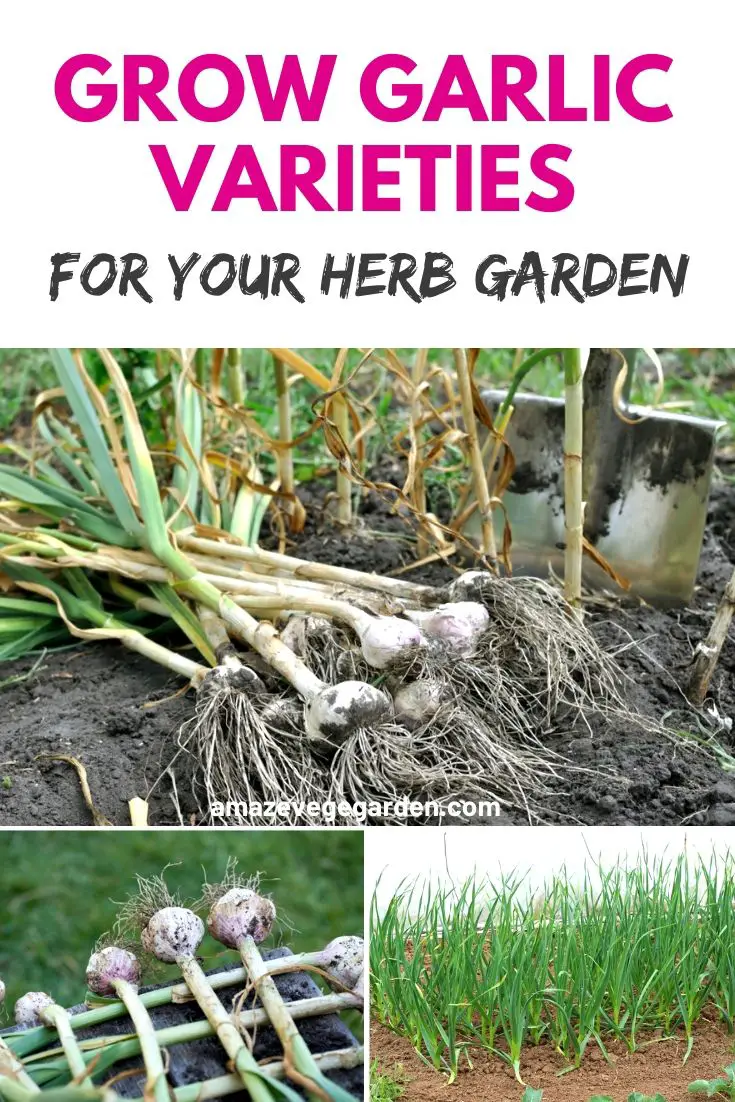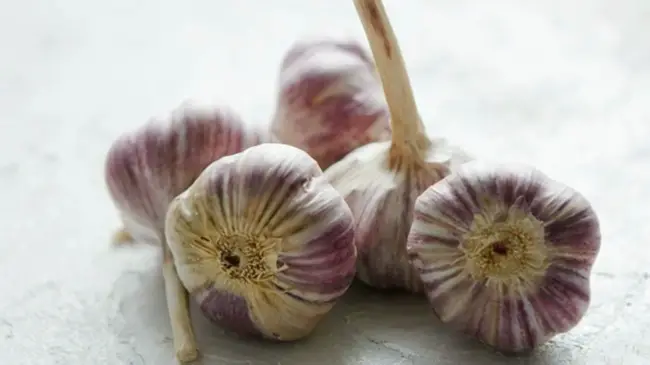Garlic is really popular in different areas, such as our daily meal recipes or as a nutrient supplement. It’s popular so homeowners, home gardeners, and different commercial producers can grow it.
Garlic is easy to grow as it doesn’t have much insect or disease pressure to worry about. So that makes it really easy for you to take care of.
There are actually huge varieties of different garlic that you can find in different countries. Since there are no international standards to classify garlic varieties, the classification is different in different countries. There are no international standards in this matter. The main variants to categorize them are on the species and groups of the garlic.
Hard Neck and Soft Neck
There are huge varieties or different types of garlic that you can find in this world. Generally, you can categorize them into two major types, which are hard neck and soft neck. Sometimes people also call hard neck stiff garlic.
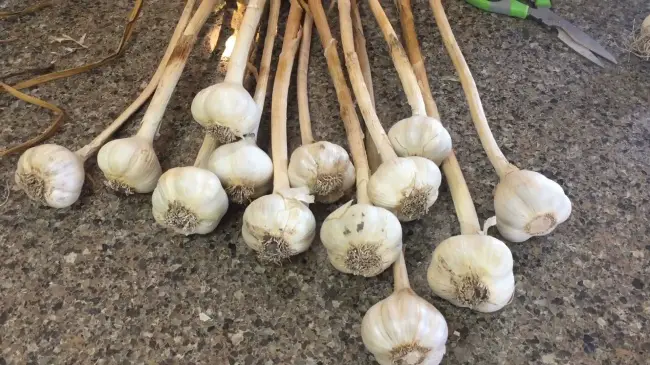
Those are just some little differences that you can find. But generally, the one that does the best would be the hard neck garlic because it generally overwinters a little bit more.
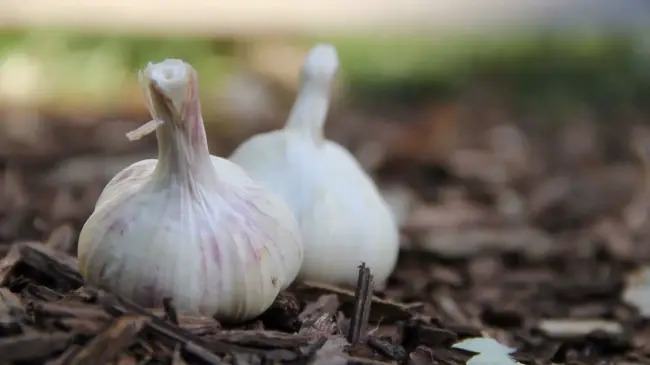
You can typically find soft neck garlic in two different types: silverskin and artichoke. While for hard neck garlic, you can see more types like purple stripe, porcelain, and rocambole. Purple stripe and porcelain give you a little bit of coloration. Fo rocambole typically doesn’t do good in warm areas.
Difference Between Hardneck Garlic And Softneck Garlic
The first question people always ask me is, what’s the difference between hard neck garlic and soft neck garlic?
In a nutshell, it’s very simple. Hardneck varieties don’t store very well, but they taste better than soft neck varieties. Softneck varieties store very well, but the taste is not as good as hard neck varieties.
Hardneck garlic has a scape, and once it is dried, the scape becomes hard. While for soft neck garlic, it doesn’t have a scape, and the size tends to be bigger than hard neck garlic.
The soft neck garlic has a bigger size because it has a second clove cover around it, while it just grows around the scape for hard neck garlic.
Strength of Flavor
Once you start growing garlic, you’ll want to experiment with some of the different garlic varieties available.
Here is a list of some of the common varieties below.
They are arranged by the strength of flavor, ranging from very mild (may be eaten raw) to strong:
Very Mild Garlic Varieties
You might want to start with these first if you aren’t an “experienced” garlic eater:
California Early, Cuban Purple
Mild Garlic Varieties
Applegate, Early Red, Italian Red, Toch, Siciliano, Simonetti, Chet’s Italian, Red Korean, Red Russian, Red Streak, S&H Silverskin, Burgandy
Medium Garlic Varieties
Inchelium Red, Maiskij, Silverwhite, Ajo Rojo, Creole Red, Libera Purple, Pescadero Red, Persian Star, Belarus, Purple Glazer, Siberian, Georgian Crystal
Strong Garlic Varieties
Lorz Italian, Shilla, Purple Cauldron, Nootka Rose, Chesnok Red, Metechi, Bogatyr, Georgian Fire, Romania Red, German Stiff neck, Music, German White, Zemo, Rosewood, Wild Buff, Leningrad, Polish Hardneck, Spanish Roaj, Killarney red, German Red, Polish Carpathian, Amish Rocambole, Purple Italian, Rocambole, Italian Easy Peel, Korean Red Hot, Asian Tempest
More Garlic Varieties
Validator
We are going to start our discussion with the validator. As you can see, they’re huge bulbs, and they give lovely juicy cloves from them. Typically, most people will plant them from October to December to get an earlier variety in the spring.
Provence
Provence is like the validator which also has a big bulb and also lovely juicy taste. But you need to bear in mind that if you want to plant Provence in your garden, you need to plant them before Christmas. If you plant after Christmas, you are going to get much smaller bulbs from them.
Solan
Solan has a larger size compared to other types of garlic. This garlic is really a tasty clove. It is a clove of soft neck garlic that you can plant anytime between October and March.
If you plant them in March, they may not grow quite as big as compared to other months, but they’re still excellent enough.
Elephant Garlic
Believe it or not, elephant garlic is considered cloves and not bulbs. You can take one elephant garlic and compare it to a standard Provence clove. This type of garlic is actually from the leek family, but it tastes very similar to garlic, and they’re great fun to grow.
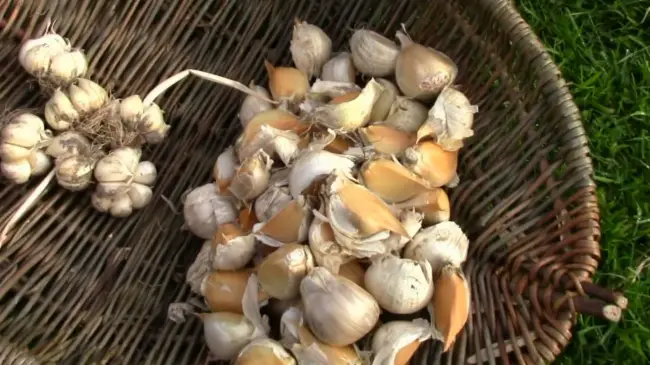
Early Purple
Its name is called early purple for the very reason that they go into the ground a little bit earlier. Normally they are being planted in late November. They are ready earlier in the season, like in early May. They taste perfect, but they don’t store very well.
Tuscany Garlic
Tuscany garlic is a lot smaller compared to validator or province. It’s a hard neck variety, and it generally goes into the ground from December to March. It has a really intense flavor. It is smaller, but it tastes really nice.
Lautrec
Lautrec is the garlic that all the chefs are after. It’s the prized garlic of the pack. It is small, and it doesn’t store very well. But it would help if you gave it a try, and you won’t regret planting it in your garden.
Turbins
Thai Purple, Tzan, Shantung Purple, Shandong, Chinese Purple, Xian, Tuscan, Topal, Thai Fire, Lotus.
Artichokes
Susanville, Red Toch, Oregan Blue, California Early, Achatami, Transylvanian, Early Red, Lortz, Kettle River Giant, Italy Purple, Aglio Blanco.
Creoles
Rose Du Lautric, Cuban Red, French Red Rose, Spanish Morada, Burgandy, Creole Red, Fr. Germadour, Native, Creole, Spanish Benittee, Aglio Rossa.
Asiaic
Singing Falls, Japanese, Asian Tempest.
Rocobole’s
Orting, Brown Sexon, Montana Giant, Osage, Spanish Rojo, Chamisal Wild, Cherokee, Purple IT, Ontario Purple Trillium.
Marbled Purple
Bai Pi Suan, Brown Vespar, Duganski, Siberian, Metechi, Bogatyr, Brown Tempest, Bzenc.
Silverskin Porcelain
Greek, Rosewood, Siskiyou Purple, Rose Du Var.
Purple Stripe
Persian Star, Chesnok Red, Shatila, Telk, Vernchnyana Mcapa, Kishllk, Darchelli.
Glassed Purple Stripe
Vekak, Purple Glazer, Red Rezan.
Unclassified Middle Eastern
Arpakalin, Syrian, Punuk, Himalayan Red, Lampang, Pakestinian, Aktyubinsk, Black Opal, Tai Cang, Verveist, Nepal, Vitnius, Sural, Gadym Saryesak, Ajo Rojo, Belaruis.
Which Garlic is Best for Health?
- Fresh garlic: Fresh garlic contains the highest levels of allicin, a compound that is responsible for many of garlic’s health benefits. Allicin has been shown to have antibacterial, antiviral, and antifungal properties. It may also help to lower blood pressure, cholesterol levels, and the risk of blood clots.
- Black garlic: Black garlic is made by aging fresh garlic under controlled conditions of heat and humidity. This process changes the color, flavor, and texture of the garlic, but it also increases its antioxidant content and makes it easier to digest. Black garlic has been shown to have a number of health benefits, including boosting the immune system, lowering blood pressure, and protecting against heart disease.
- Wild garlic: Wild garlic has a more intense flavor than cultivated garlic, but it is also more nutritious. Wild garlic is a good source of vitamins A and C, as well as minerals such as iron and calcium. It has also been shown to have antibacterial and antiviral properties.
What Variety is Chinese Garlic?
Chinese garlic is a variety of hardneck garlic. It is characterized by its large, round bulbs with 8-10 cloves centered around a central stalk. The cloves are uniform crescents and can range in color from light gold to white. Chinese garlic has a strong, pungent flavor and aroma.
Chinese garlic is the most popular type of garlic in the world. It is grown in many parts of China, but the most famous Chinese garlic comes from the Shandong province. Chinese garlic is exported to many countries around the world, including the United States.
Chinese garlic is a versatile ingredient that can be used in a variety of dishes. It is commonly used in stir-fries, soups, and sauces. Chinese garlic can also be roasted or eaten raw.
What Kind of Garlic Commonly Used By Chefs?
Chefs use a variety of garlic types depending on the dish they are preparing. However, the most commonly used garlic in cooking is the softneck variety. This is because softneck garlic has a circle of plump cloves shrouding a second circle of smaller cloves, all enveloped by many papery layers.
Here are some specific varieties that chefs might use:
- Siberian: Offers a mild flavor that hints at garlic.
- Elephant garlic: Elephant garlic is a type of leek that has a mild garlic flavor. It is often used in roasted dishes, soups, and stir-fries.
- Black garlic: Black garlic is made by aging fresh garlic under controlled conditions of heat and humidity. It has a sweet and smoky flavor, and it is often used in Asian cuisine.
- Georgian Crystal: Has a clear garlic flavor with medium heat.
- Thermadrone: Known for its mild flavor.
- German Red: Has a heavier complex flavor with no heat when cooked.
- Red Rezan: Known for its mild heat and great taste.
Each variety has its own unique flavor and characteristics, which can enhance the taste of different dishes. For example, French Red garlic, a softneck variety that originated in France, is known for its rich, complex, and slightly spicy flavor. It’s commonly used in French cuisine, including stews, soups, roasted meats, and sauces.
Read also:
Did you find this post useful? Would you like to get back to it later? Save THIS PIN below to your gardening or herb garden board on Pinterest! 🙂
